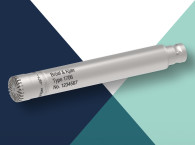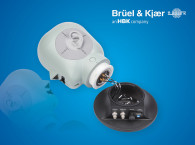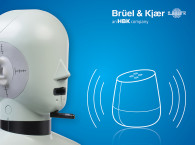
In reality, Bruel & Kjaer has been researching binaural solutions for some time, and in its extensive portfolio there was already a binaural microphone model, which could be complemented with the company's range of excellent portable audio interfaces, supporting all formats and applications. audioXpress had the opportunity to experience a demonstration of that solution at the 141st Audio Engineering Society convention in Los Angeles, and that's precisely the same technology which was used as the foundation for the newly announced binaural microphone type 4101-B (and 4965-B variation), designed for binaural recordings at the entrance to the human ear canal.
The Bruel & Kjaer type 4101-B binaural microphone is an easy-to-use lightweight and compact design, combining two miniature, prepolarized condenser microphones that are positioned at the entrance to the ear canal and do not affect normal hearing capabilities. This allows to record two channels of sound connected to and powered from a CCLD input via BNC plug, while B&K provides its own SonoScout Digital Recorder and recommends a pair of Sennheiser H800 or Audeze EL-8 headphones for playback.
The strength of binaural recording lies in capturing sound exactly as it is heard by the human test subject in order to recreate a 3D stereo sensation – thus allowing every listener the chance to play back the recording and experience sound, again and again, as if from the best seat in the house. Binaural microphone types 4101-B and 4965-B are designed to be worn comfortably by a test subject for the purpose of making binaural recordings. Together, they are intended to provide a complete listening and playback solution for use with Brüel & Kjær’s Sonoscout NVH Recorder. However, with any CCLD conditioning, they can also be used in other sound recording scenarios.
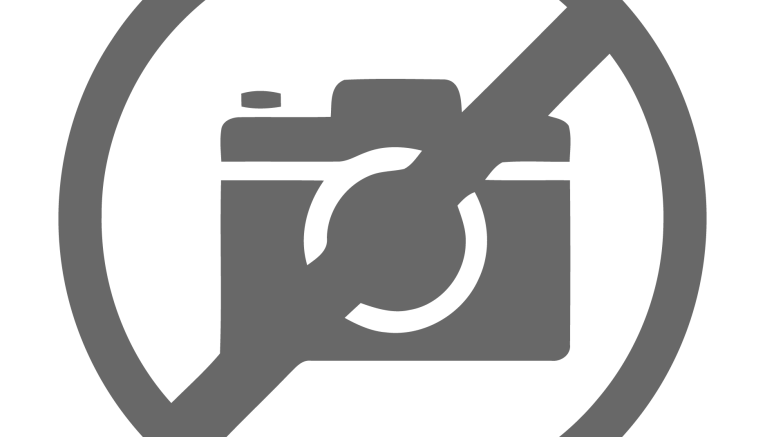
The brand new binaural microphones have also been designed specifically for binaural sound recordings where testing on a human subject is preferred and/or where the use of the traditional head and torso simulator (HATS) method is precluded. These microphones are lightweight, do not affect normal hearing capabilities and, consequently, do not influence test results.
According to Bruel & Kjaer, the type 4101-B microphone can be used for sound recordings where a vehicle driver wears the binaural microphone and where the influence of the test subject’s head and torso is important, including sound recordings of a helmeted test subject, such as a motorcycle driver and psychoacoustic experiments requiring binaural sound recording on human subjects. This allows the evaluation of headphones and earmuffs on a human subject; benchmarking vehicles for reference or processing into simple PULSE NVH Vehicle Simulator models; capturing vehicle behaviour during on-road evaluation or while using DTS On-Road Simulator; cabin noise measurements.
The binaural microphones are available in two configurations. Type 4101-B is an in-ear microphone set, using selected versions of the well-proven miniature condenser microphones from DPA Microphones, mounted in moisture-resistant, gold-plated capsules. It comes with an ergonomic mount that wraps around the back of the user’s head and ears. This mount can be easily adapted to suit any ear size and/or head shape for a secure yet comfortable fit. The individual microphone capsules sit in the concha of the ear, cushioned by the included foamy windscreens (available in two different sizes to fit most users).
Compact and slim, Type 4101-B can be comfortably worn under a driver’s or pilot’s helmet. It features professional grade cables and includes a cable clip that can be attached to the user’s clothing to relieve pressure on both the cable’s upper section and the user’s ears, eliminating any unnecessary weight or stress from the remaining cable.

The second configuration (pictured above), Type 4965-B, combines binaural microphone Type 4101-B plus a pair of bone-conducting, Bluetooth-enabled headphones – for easy monitoring of captured data. This configuration is focused on noise, vibration, and harshness (NVH) testing, where a person’s perception of sound is investigated and important to understand. The headphones are designed to be positioned next to the ears, thus giving the driver/passenger a perfect impression of the vehicle experience.
As the headphones are separate from the microphone headset, they can be effortlessly removed to perform measurements while the test subject is wearing a helmet and/or is exposed to high gravitational forces. Use of the headphones is optimal in combination with the Sonoscout Type 3663 recorder. Measured sound data can be played back to the headphones via Bluetooth, which makes the user completely wire-independent from the measurement solution. They are also ideal for obtaining data for use with PULSE NVH Vehicle Simulator Type 3644, as it's possible to simultaneously record audio and vehicle performance data with Sonoscout and export it to an NVH Vehicle Simulator model for processing.
The binaural microphones incorporate transducer electronic data sheet (TEDS). This means that the actual identity and loaded sensitivity of the left and right microphones are programmed into the TEDS memory, making set-up very easy and fool-proof. The microphones are selected based on matching frequency responses and each set is calibrated with Head and Torso Simulator Type 4128, which also has an open ear canal. In a diffuse sound field, the binaural microphone set is measured for its diffuse-field response mounted on Type 4128. The free-field response at zero-degree frontal incidence is measured in the same way but in an anechoic room. In both cases, the results are averaged over several mountings of the microphones on Type 4128. The resulting data is included in PULSE Sound Quality Software Type 7698. The free-field and diffuse field responses, as well as the individual factory sensitivity calibration data, are available for download.
In-use level calibration of the binaural microphone set is performed using the supplied calibration adapter together with Sound Calibrator Type 4231. Using the adapter, the output level from the calibrator will be increased by 0.35 dB ±0.2 dB.
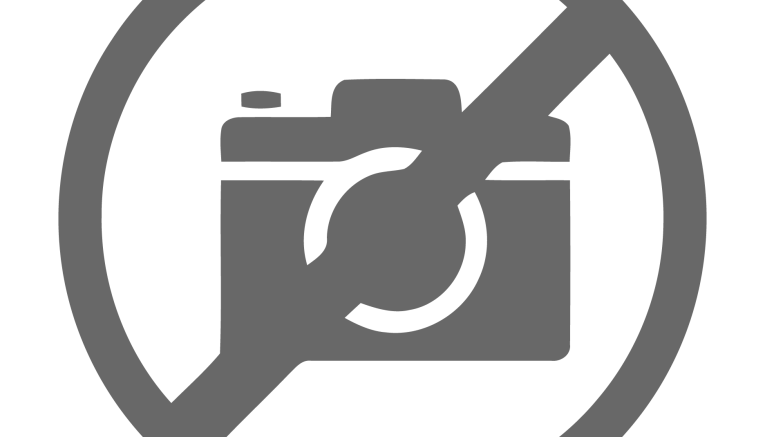
Sonoscout is an ultra-portable, multi-channel, wireless NVH recorder from Brüel & Kjær, which allows real-time recording validation with a simple touch of an iPad screen. Sonoscout continuously displays test information, such as tacho channel output, to maximise confidence during testing, and brings simple control and analysis to tasks such as comparing vehicle and data sets. The Sonoscout system is a combination of an iPad app (BZ-5950-A) and a battery-powered acquisition front-end based on Brüel & Kjær’s modular LAN-XI hardware, connecting up to 12 measurement transducers that transmit data to the app. For vehicle test applications, the binaural microphone headset captures cabin sound in real-time and replays recordings immediately. In addition, Sonoscout can be used for simple analysis functions like rotating machinery validation or benchmarking and is the perfect first step before exporting known data for further analysis in PULSE Reflex, or other post-processing software.
The system runs on iPad 2 and iOS 6 or later, with data streaming directly to the mobile device. Version 2.0 of Sonoscout was released January 2017, and significantly updates the look and feel of the app and adds new features, which includes ASAM-ODS .atfx file export and the in-app LAN-XI battery meter. The Sonoscout license includes the Notar recorder capability.
The complete Brüel & Kjær binaural solution will be demonstrated for the very first time at CANJAM SoCal, April 8-9, 2017.
www.bksv.com



